- Bernard Preston homepage
- Kefir
- How to Make Kefir
How to make kefir
Once you know how to make kefir it takes only about five-minutes; I have had a love affair with this ancient natural probiotic since it fixed in one week a severe bellyache of many years' duration[1].
These days we are all overexposed to many drugs and chemicals that harm the normal-flora in our intestines, bladders and even the armpit. In the happy tum there is an astonishing 2kg of friendly bacteria, viruses and yeast cells.
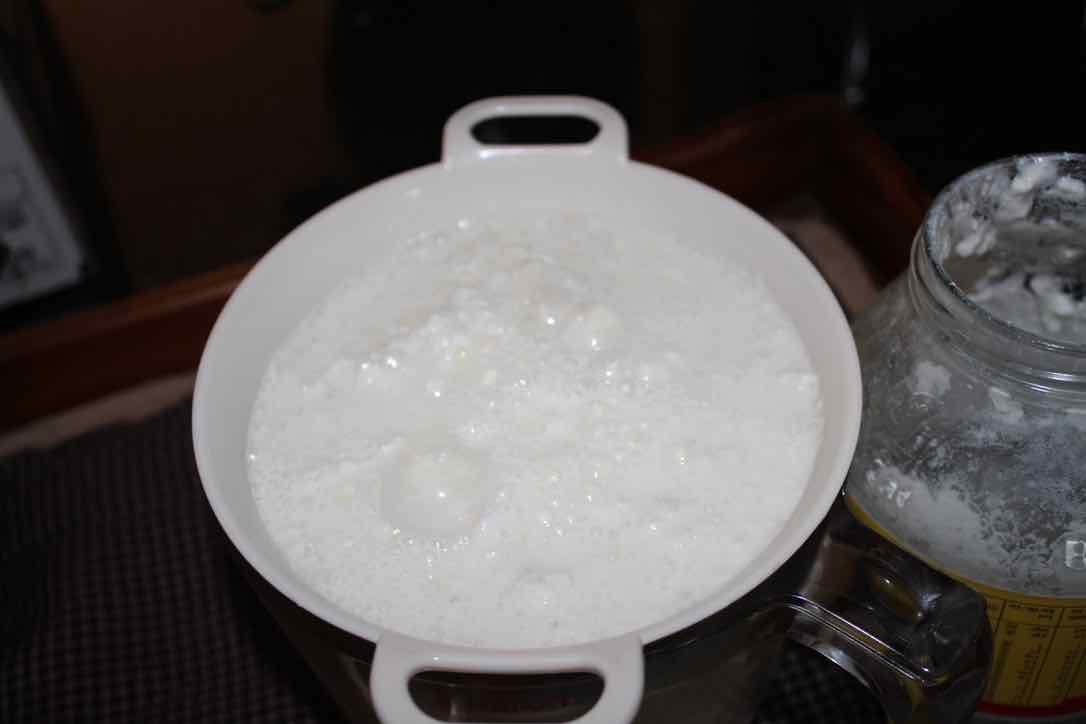
Most of us are seriously deficient so preparing a natural probiotic in your home is the solution; we have found how to make kefir the simplest. It is inexpensive and takes less than five-minutes.
Researchers have shown that the diversity as well as the weight of these bugs in the colon is important; in your homemade kefir you will have over thirty different friendly bacteria.
In a probiotic supplement there will rarely be more than four; at fifty-times the price.
How often should you drink kefir?
Initially you should make kefir daily for perhaps a month. How frequently you consume it after that is totally dependent on your lifestyle. We find that twice a week works for our wellbeing; there appear to be very few evidence-based guidelines, so follow your own instincts.
Another few minutes using a stick-blender makes lovely smoothies with a teaspoon of natural honey so it's greatly enjoyed for breakfast.
Calcium
The cost is that of one cup of milk; dirt-cheap. It is also the most readily absorbed form of calcium apparently; important for every woman.
Along with more exercise, get your calcium from kefir; it's the only osteoporosis prevention programme that actually works. The mineral plus axial loading of the skeleton improves the microstructure of bone.
- Get some active kefir culture from a friend, or the frozen seed from your wellness store; place it in a half-litre glass bottle. A fairly wide lid is helpful.
- Add about a cup of milk. Raw tastes better but regular pasteurised-dairy from the store works perfectly well.
- Leave it on the kitchen-counter for a few hours until it curdles. Then you could put it in the fridge, depending on how strong you want it; we don't.
- Add a few tablespoons of unchlorinated water and stir it up.
- Pour
the contents into a small plastic colander over a deep dish of sorts; I use a
glass measuring-bowl. Allow it to drain and scrape the whey through with a stainless steel spoon.
- Return the curds to the same bottle, add a little more unchlorinated-water and stir; and again pour through the colander. You may want to repeat this; I do sometimes if it's still milky.
- Then spoon the washed kefir granules into a clean bottle; add fresh-milk and start again.
Then you either drink the cultured-milk that you have strained off or use it in a smoothie to soften the sour taste. It is not to everyone's liking but with a quarter of a banana and a teaspoon of raw honey it is perfectly palatable.
Made with raw-milk I find it is a little sweeter but obviously you must know your dairyman. Contamination from unfriendly bacteria is possible.
Unchlorinated water
You must use unchlorinated-water to rinse the curds or it will kill the friendly kefir bacteria.
We use filtered and sterilised rain-water harvested from the roof; and stored in an underground reservoir.
Water scarcity in the world is a serious consideration of ours; now we can enjoy using it freely without guilt.

For those who like to make artisan-bread as we do, adding some of your kefir filtrate to the dough makes a lovely softer crumb. The good wife wants to know whether it's simply the dairy, or the bacteria that are helping to predigest the gluten. We need to experiment more.
Sourdough has a mind of its own though, as even experienced bakers will tell you. Once you know how to make kefir and prepare your own artisan-bread you'll never go back to the commercial loaf.
Some things in life cannot be hurried, though we humans are forever looking for more short-cuts; a few are okay but not when making a probiotic, nor whilst baking a decent loaf of bread.
To have less and live more is part of our philosophy of life. It's perfectly expressed when forest bathing too. Take time to smell the roses; the ghastly alternative is stress, nervous-breakdowns and psychiatric medication.
As for me and my family, we choose to live now in the slow-lane; it's blissfully pleasant.
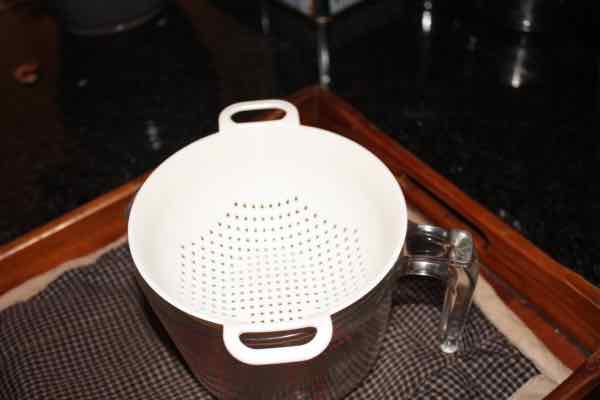
Supporting the microbiome
"The benefit of a Firmicute culture was evident as early as week 2, highlighting the need for rapid gut flora repair after completing standard of care antibiotics."
- Journal of the American Medical Association[2]
Fibre for the friendly flora
It's not enough to drink a glass of kefir and other probiotics daily; we also have to support the microbiome. Here are several steps that we can and should take to increase the diversity of friendly bacteria, yeasts and virus in the gut.
- Enjoy a diet rich in the fibre that those friendly bugs feed on. That means fruit, vegetables and whole-grains daily, says Dr Mark Goodarzi, an endocrinologist. How to get more fiber is not rocket science.
- Wherever possible try to reduce the saturated-fat. Could you use avocado or olive oil instead of butter on your bread?
- Get more of your protein from legumes; eat less red-meat.
- Avoid artificial-sweeteners and reduce sugar; both will deter your microbiome.
- Get more daily exercise.
Sharing your kefir
Your kefir will slowly acquire bacteria, viruses and yeasts from your environment. You will notice that it is quite mild initially, becoming more sour as this happens.
In theory this could be problematic though I have never heard of a case of pathogens being passed on to those with whom you share your starter; it could happen.
Certainly if you are a sickly person, don't share your kefir with others.
Not washing the granules
If you want to share your kefir with a friend, simply stop washing the granules for a few days when straining off the whey. You will find that they multiply quite quickly. Add a teaspoon of desiccated coconut that will act as a substrate.
Kefir smoothie
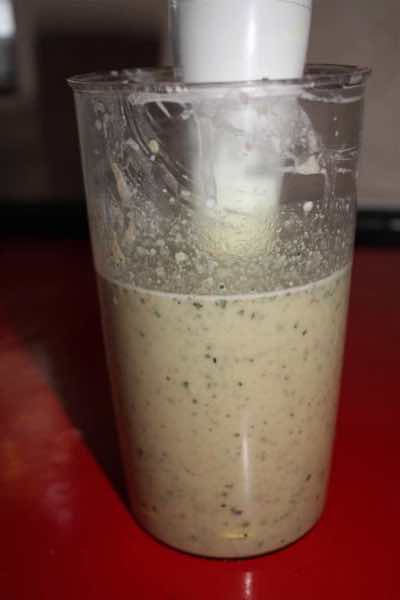
We make a number of different kefir smoothies; all have a quarter of a banana and half a teaspoon of honey. Those who are prediabetic must keep the glycemic-load down. Raised blood glucose from chronic excessive carbohydrate consumption is a killer; literally.
This perfect butternut smoothie hides all the sourness of kefir making a wonderful breakfast; the beta-carotene, the precursor of vitamin A gives protection against blindness, measles[4] and type 2 diabetes.
How to make kefir
How to make kefir in your own kitchen is not higher mathematics; the easiest probiotic in my opinion. Sauerkraut is an alternative but a lot more long-winded; in fact we should regularly have both. They provide different friendly bugs for the microbiome.
Another of my favourites, also a less difficult probiotic, is this fermented peppadew sauce; you can use any chili that is readily available.
Another is this wheat beer made using natural honey instead of sugar; each probiotic provides different bugs adding to the diversity. Actually we should regularly be enjoying several.
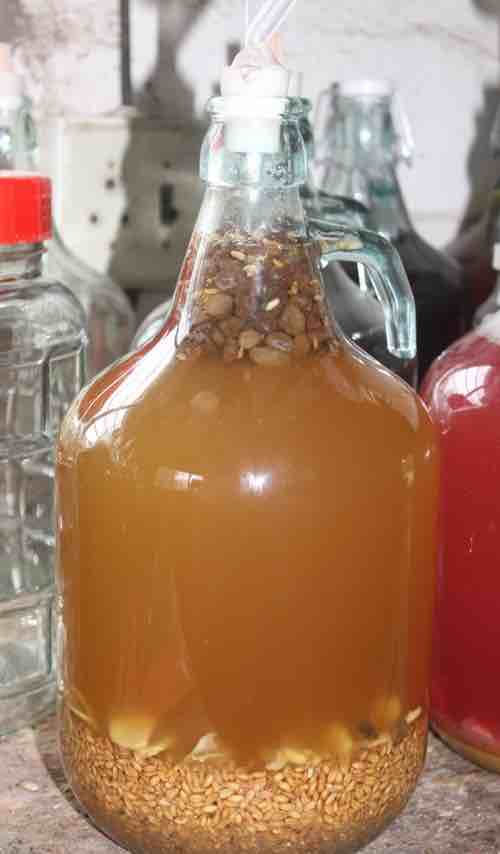
Whilst even small amounts of commercial alcohol are unfortunately deleterious, increasing the risk of malignant breast tumours, Blue Zone folk drink several glasses of unpasteurised natural local wines daily with their meals; they act as a probiotic.
Blue Zone longevity is the buzzword; it would seem that natural probiotic wines are not damaging to our genes and may actually promote wellness.
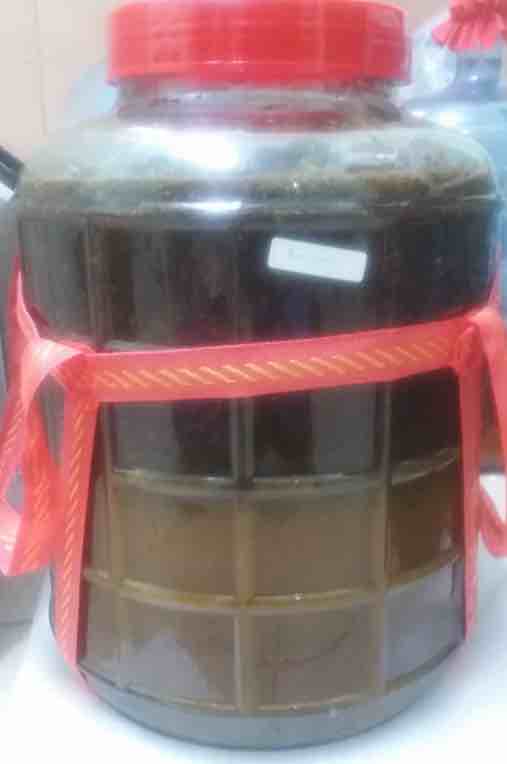
This all-hive mead is another excellent probiotic.
Is kefir healthier than yogurt?
Yes kefir is healthier than unpasteurised yoghurt though they both make good choices.
Kefir has over 30 different species of friendly bugs; research shows that the diversity is just as important as the total weight of the microbiome.
Kefir also has less sugars; it's quite sour and thus even better for those who are lactose intolerant. It will fix a dose of diarrhoea very quickly by outnumbering the pathogens.
Did you find this useful content?
If you found the content of this page on how to make kefir useful, would you forward it to a few friends who are struggling with some of these issues?
When browsing use right click and Open Link in New Tab, or you may get a bad gateway signal.
Newsletter
Our newsletter is entitled "create a cyan zone" at your home, preserving both yourself and Mother Earth for future generations; and the family too, of course. We promise not to spam you with daily emails promoting various products. You may get an occasional nudge to buy one of my books.
Here are the back issues.
- Lifestyle and ideal body weight
- What are ultra-processed foods?
- Investing in long-term health
- Diseases from plastic exposure
- Intensive lifestyle management for obesity has limited value
- A world largely devoid of Parkinson's Disease
- The impact of friendly bacteria in the tum on the prevention of cancer
- There's a hole in the bucket
- Everyone is talking about weight loss drugs
- Pull the sweet tooth
- If you suffer from heartburn plant a susu
- Refined maize meal and stunting
- Should agriculture and industry get priority for water and electricity?
- Nature is calling
- Mill your own flour
- Bake your own sourdough bread
- Microplastics from our water
- Alternative types of water storage
- Wear your clothes out
- Comfort foods
- Create a bee-friendly environment
- Go to bed slightly hungry
- Keep bees
- Blue zone folk are religious
- Reduce plastic waste
- Family is important
- What can go in compost?
- Grow broad beans for longevity
- Harvest and store sunshine
- Blue zone exercise
- Harvest and store your rainwater
- Create a cyan zone at your home
Did you find this page interesting? How about forwarding it to a friendly book or food junkie? Better still, a social media tick would help.
- Bernard Preston homepage
- Kefir
- How to Make Kefir
Address:
56 Groenekloof Rd,
Hilton, KZN
South Africa
Website:
https://www.bernard-preston.com